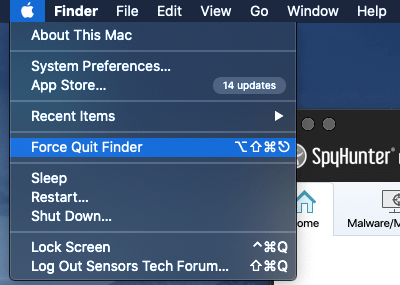
/SophosScan-59f3a7dad963ac00104587dc.jpg)
- REMOVE MALWARE FROM MAC 2017 FOR FREE
- REMOVE MALWARE FROM MAC 2017 HOW TO
- REMOVE MALWARE FROM MAC 2017 INSTALL
- REMOVE MALWARE FROM MAC 2017 SOFTWARE
REMOVE MALWARE FROM MAC 2017 SOFTWARE
And it even comes disguised as security software to help you get rid of viruses! Devious, huh? Malware comes in lots of different forms.
REMOVE MALWARE FROM MAC 2017 HOW TO
Here’s how to get rid of unwanted browser extensions.
REMOVE MALWARE FROM MAC 2017 INSTALL
Even extensions that aren’t particularly malicious can be annoying, and if you didn’t deliberately install them, they’re malware. One of the most common types of malware comes in the form of browser extensions. And Mac virus removal doesn’t have to cost money. Thankfully, there are lots of ways to do it.

How to remove a virus from a Mac manually These symptoms may mean your Mac has a virus, although there could be other explanations. An app asks for your administrator password.You find software or applications you didn’t install.You start seeing adverts on your desktop.Your Mac starts running very slowly as if something is hogging the processor.Your Mac starts behaving erratically and doing things you don’t expect.We’ve covered that in more detail in this article but here are a few pointers. Don’t click strange adverts or pop-ups that appear on websitesīefore you remove a virus from a Mac, you need to be sure it actually has one.Avoid downloading software or data from an unfamiliar site.Don’t open any suspicious email attachments.Avoid clicking suspicious email links (especially if you don’t identify the sender).How to avoid viruses on Mac?īefore we tell you how to get rid of viruses on a Mac, let’s see what can you do to avoid downloading malicious programs in the first place: So, answering the question, yes, Macs do get viruses, and they may impact your sensitive file and data seriously. According to the State of Malware report mentioned before, Macs are mostly attacked by adware and potentially unwanted programs (PUP), which macOS has no counteraction against. But, as the Apple security features have improved, so is malware. Macs are indeed secure, thanks to various built-in features, such as GateKeeper, that don't allow installing anything not approved by Apple. Macs have been considered safer than Windows PC for a long time. Once you run that program, the virus executes the malicious code and causes real damage: it can track your passwords and data and even share this sensitive information with third parties. It attaches itself to other software, so if you, let's say, download a free app from suspicious websites, you may accidentally "open the door" to malicious code that comes bundled with that app. So, do you still believe that Macs don’t get viruses? Continue reading to discover how to remove a virus from your Mac and protect your files from getting infected.Ī computer virus is a malicious program that changes the way your computer normally operates. The report claims that cybercriminals now target Macs severely due to increasing market share. Sadly, it’s not true. The latest State of Malware Report by Malwarebytes describes a significant rise of Mac threats of over 400%. You may have heard it's said that Macs don’t get viruses. It thoroughly checks your whole system and lets you remove any traces of malware from your computer.įeatures described in this article refer to the MacPaw site version of CleanMyMac X.
REMOVE MALWARE FROM MAC 2017 FOR FREE
So, here’s a solution: Try CleanMyMac for free to scan your Mac for viruses, adware, and other malware right now.


 0 kommentar(er)
0 kommentar(er)
